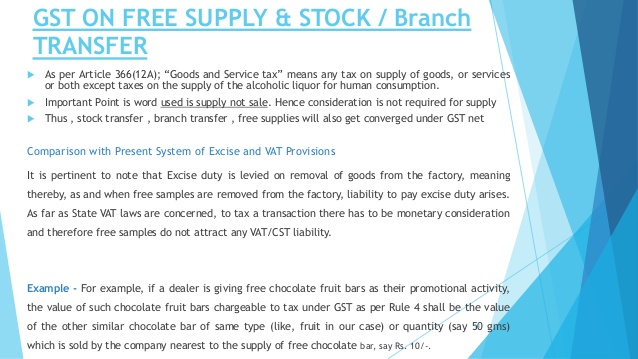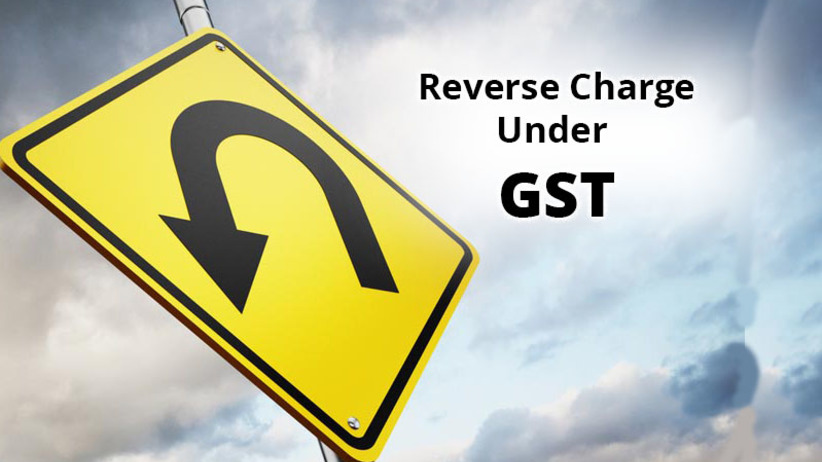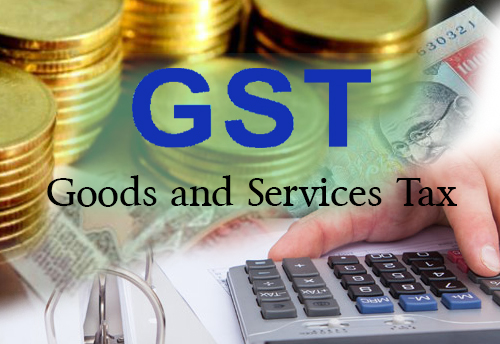How the System of Input Tax Credit in Goods and Services Tax (GST) being introduced affect your business

System of Input Tax Credit in Goods and Services Tax
In an attempt to make possible a full-fledged and flawless credit throughout the complete supply chain under a common tax base, the Goods and Services Tax has come into being that is supposed to root out all kinds of artificial restrictions that are coming in the way of the input credits. The System of Input Tax Credit in Goods and Services Tax may have some bearing on costing of your business. Please read on to understand the impact-

Under the present law, the inter levy credits in between the excise and service tax have certain restrictions and there are no provision of cross credits between the sales tax paid and the central taxes. Therefore, if GST is implemented in the appropriate manner can indeed surpass the expectations of the masses.
How seamless System of Input Credit in Goods and Services Tax is possible?
Taxes under GST: The Goods and Services Tax is based on a model comprising of several substantial systems and procedures designed to handle the timing and quantum of the input credit. Broadly GST is made of three taxes, namely:
- The Central Goods & Service Tax levied by the Centre (CGST),
- The State Goods and Service Tax levied by the State (SGST) and
- The Integrated Goods and Service Tax (IGST) that will be levied by the Central Government for the interstate supply of goods and services.
Understanding the System of Input Tax Credit in Goods and Services Tax
Interestingly, although the backbone of GST is based on the CENVAT Credit Rules (CCR), yet, the internal provisions are more patterned as the State’s VAT law.
Now, in order to understand the concept of input tax, at first it is important to know what exactly Goods and Services Tax (GST) has to say about the same. According to the GST model law, “The CGST, SGST and IGST charged for any supply of goods and services used or intended to be used in the course of furtherance of business and also include tax paid under reverse charge mechanism. The ‘input tax credit’ means credit of input tax so defined.
However, as per Goods and Services Tax (GST) Model Law, the credit from the input tax can be taken by any registered and taxable person, which will then be subsequently credited to the electronic credit ledger of the concerned person that is maintained in the GST network. This available amount can then be utilized by that particular person in order to pay the taxes subject to a pre-defined time frame and other terms and conditions.
Input Credit of GST cannot be used for payment of Any Interest/ Penalty- However, the same cannot be utilized for the payment of any kind of interest, fees or other penalties.
Maintaining the correct sequence while payment of the output liabilities in cases of the CGST, SGST and IGST is very crucial, which means the amount of CGST available will be used for paying output liability of CGST followed by IGST and the same cannot be used for paying SGST, the amount for IGST can be used for paying output liability of IGST followed by CGST and SGST and finally the amount available for SGST will be utilized for payment of the output liability of SGST followed by IGST and not at all for CGST.
Modern picture of input tax credit under GST:
The Goods and Services Tax is yet to come up with the input tax credit rules and the present input tax credit picture is similar to the prevailing law comprising of the inputs, input services and the capital goods. Although there will not be a major change in the picture of the input credits in case of capital goods, yet, in case of certain inconsequential scenarios, the amount of tax related to the capital goods can go down vastly under GST.
Here again, the concept of ‘input’ is important and it is defined in Section 2(54) of the Model GST law as “means any goods other than capital goods, subject to exceptions as may be provided under this Act or the rules made there under, used or intended to be used by a supplier for making an outward supply in the course or furtherance of business “.The ‘input service’ also is vital to be noted under GST Model law and it goes like “any service, subject to exceptions as may be provided under this Act or the rules made there under, used or intended to be used by a supplier for making an outward supply in the course or furtherance of business”.
Each of these is however, related to output supply only and under the GST regime, it is expected to have seamless input credit in the inputs goods and services and at the same the rightful business expenditures are likely to be exempted from the input credit tax such as group medical insurance, input construction goods and services, etc.
More facts about input tax credit
The tax invoice bears a lot of significance under the GST Model law, as the input tax credit can be availed only with respect of production of the valid tax invoice receipt and the same cannot be availed for goods and services if the time period exceeds beyond one year from the date of issue of the tax invoice.
Moreover, a person cannot avail input tax credit if the filing of return has been completed under Section 27 for September following the end of financial year. Clearly, the time period for claiming input tax credit is exceedingly short with regard to the Indian business scenario.
Other provisions under GST Model law
The various other vital features under the GST are refund structure of input tax credit and transition of credit issues. Refund is an example of a wise move by the Government that can be explained as under:
- Refund of un-utilized tax credit at the end of a tax period is also allowed in two cases – (i) when the taxpayer is exporting goods or services; and/or (ii) where the credit has been accumulated because of inverted duty structure, that is, where tax rate on inputs being higher than the tax rate on output. Therefore, the refund against exports will be indeed a matter of delight for the business people.
2. In case of transition from the present non-taxable position to a taxable position under GST, the permitted credit will be based on the stock of inputs as raw materials, semi-finished or finished goods and computation will be done according to the Generally Accepted Accounting Principles or GAAP. However, there are high chances of un-utilized credit in the electronic ledger of a person getting lapsed, which is the main apple of discord under the GST regime that has to be taken into account.
Endnote: The Goods and Services Tax has been structured with a decent aim although there are several loopholes in the present draft form mainly due to the dual administration model. However, it is still in the process of getting matured with modifications as the commoners keep waiting for the final rules and procedures with higher aspirations.


 Sales Tax For E-Commerce: 3 Things Small Businesses Should Know
Sales Tax For E-Commerce: 3 Things Small Businesses Should Know  What Is The GST Liability on Free Supply of Goods and Services?
What Is The GST Liability on Free Supply of Goods and Services?  Some FAQs about GST- Understanding Scope and Provisions of GST
Some FAQs about GST- Understanding Scope and Provisions of GST  Understanding the Reverse Charge mechanism under GST and IGST?
Understanding the Reverse Charge mechanism under GST and IGST?  Pros and Cons of GST- Is Ushering in of GST worth Celebrating as media wants us to believe?
Pros and Cons of GST- Is Ushering in of GST worth Celebrating as media wants us to believe?  Arrests and Detention Provisions under GST in Detail- Are these justified
Arrests and Detention Provisions under GST in Detail- Are these justified  ITAT Amritsar: No Section 269SS Violation for One-Time Cash Payment Before Sub-Registrar
ITAT Amritsar: No Section 269SS Violation for One-Time Cash Payment Before Sub-Registrar  Tax Officials Unleash Digital Dragnet: How New Raid Powers Redefine Privacy, Property Rights in India and likely to Fuel Corruption
Tax Officials Unleash Digital Dragnet: How New Raid Powers Redefine Privacy, Property Rights in India and likely to Fuel Corruption  Income Tax Department Rewards for Reporting Tax Evasion: A Comprehensive Guide
Income Tax Department Rewards for Reporting Tax Evasion: A Comprehensive Guide  Forfeiture of Gratuity by Employer- What are the Remedies for an employee- Can employer be challenged?
Forfeiture of Gratuity by Employer- What are the Remedies for an employee- Can employer be challenged?